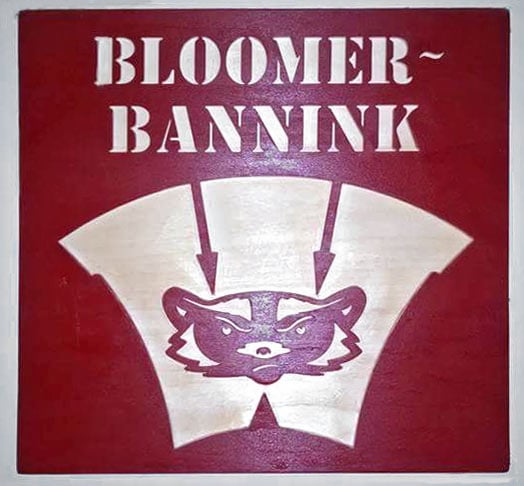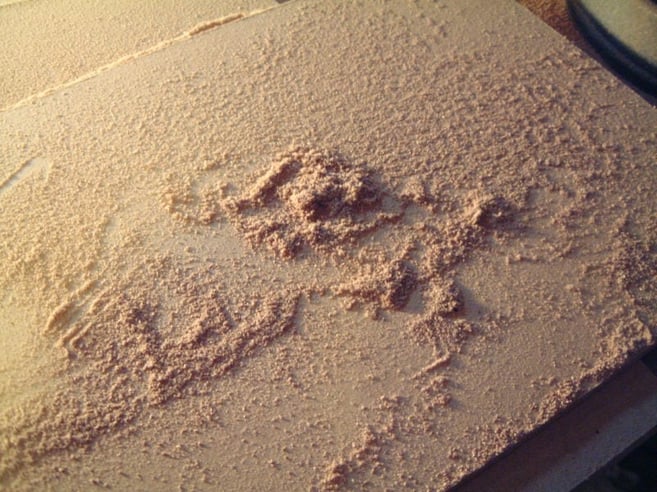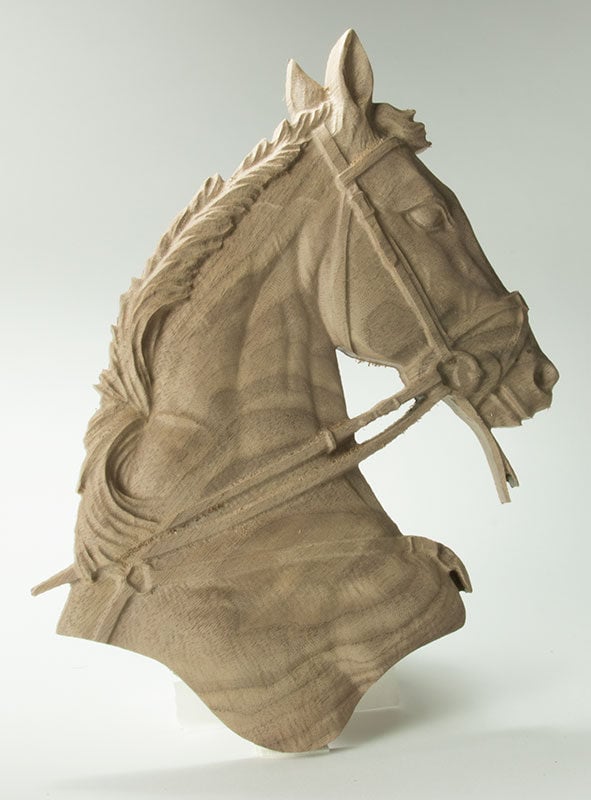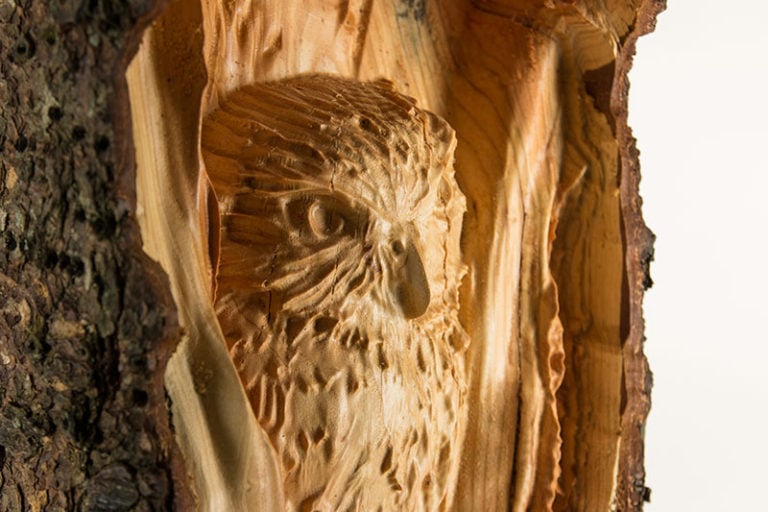Wood is a great material to cut when you first start learning to machine – it’s fast and cheap. But, machining in wood has a darker side as well.
The Pros
A lot of woods are softer than metals (there are exceptions to this, of course) and that makes wood quite forgiving when it comes to speeds and feeds. You can make tweaks to your numbers to get some great finishes if you want to take the time, but a really rough finish in wood can often be easily fixed with some sand paper. Along those same lines, because wood is soft, you can do some brutal pocketing passes that wouldn’t be advisable (or even possible) in metal. Wood is often easy to hold, since it tends to much more pliable than metal. With a few decent points of contact, you can hold almost any piece of wood without worrying about it flying across the room. Wood is also easy to stain and paint, providing some interesting methods to getting images into your piece. For instance, staining a flat piece and then subtly milling away the design which is then displayed prominently in wood grain. 
Depending on how you feel about various odors, wood often provides a pleasant smell while milling. Pine isn’t my favorite, but throw a block of cedar or even oak on your mill and your shop instantly smells like the forest. Check out these wood milling walkthroughs on our Tormach Projects Page: CNC Pinewood Derby Car
The Cons
While wood is easy to machine, it definitely has its drawbacks. Cleaning up wood in a mill can be a challenge. If you thought aluminum or steel chips got wedged into odd places of your machine, wood is like sand, it gets everywhere. If you run a very clean machine and shop-vac your enclosure immediately after, cleanup isn’t too bad, but if you have a busy mill that is often full of chips, wood chips are going to make cleaning a challenge. Metals can sometimes have inconsistencies that make them a challenge to machine, wood can sometimes be extremely inconsistent. While wood is forgiving when it comes to speeds and feeds, if you’re running a piece and hit a knot it can cause tool breakages or knock workpieces loose. 
Wood in a mill also carries the same concerns that any other wood cutting tool might. For instance, wood dust is combustible, so it’s recommended to have a dust collection system of some sort if you’re going to be doing a lot of wood cutting. Probably the most surprising con to cutting wood is how it wears tools. Believe it or not, wood acts as an abrasive and can potentially wear tools even faster than steel. While you wouldn’t notice this unless you’re cutting wood regularly, it is definitely something to consider when picking your tooling. 
While wood isn’t often synonymous with precision, making high-quality cuts in this material can lead to some fantastic results. Wood is simple to cut and quite forgiving for beginners, but if you’re planning to do a significant amount of machining in wood, be sure to do your research and be prepared for the downsides.


